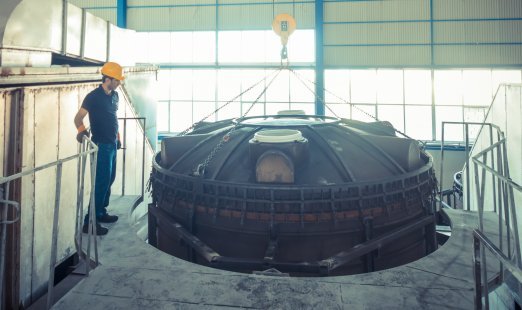Rotational molding is apparently a simple process in which molding at high temperature, generally-metal molds with low thickness, bidirectional rotation in two vertical axes, polymer in the form of fine powder or liquid, and cooling by air or water are among the conditions of this process To finally produce hollow parts without welding lines. This process has four steps as follows:
Mold Loading
A pre-weighed amount of liquid or powdered plastic is poured into the lower half of the hollow metal mold. Then, the mold is closed and placed in the appropriate place of the molding machine. The amount of polymer material is calculated based on the weight of the final piece and the expected thickness.
Heating
After closing, the mold starts rotating in two perpendicular directions and enters the furnace. After entering the furnace, the mold starts to heat up and transfers the heat to the liquid or powder material inside itself. This causes the liquid or powder polymer to stick to the inner wall of the mold cavity. At this stage, the polymer is constantly rotating in the lower part of the mold cavity due to the gravity force and this rotation allows each of the cavity points to be covered by a certain amount of this polymer material, and the entire hollow piece is gradually formed on the inner surface of the mold.
Cooling
After completing the heating stage, the rotating mold goes to the cooling station so that the temperature of the mold and subsequently, the part inside it will reach below the temperature of crystallization or solidification of the material by air flow or air flow with cold water spray. It should be noted that the rotation continues in two directions (bidirectional rotation) during the cooling phase to prevent bending and buckling of the part.
Product Unloading
When the part is cooled sufficiently, the rotation is stopped and the mold is transferred to the unloading station to unload (discharge) the part from the mold. It is ready to restart the process after emptying the mold. At this phase, the mold movement stops and the final piece, which has cooled sufficiently, is taken out by opening the mold. The figure below displays the phases of product production using rotational molding.


 فارسی
فارسی English
English عربي
عربي کوردی
کوردی
User comments